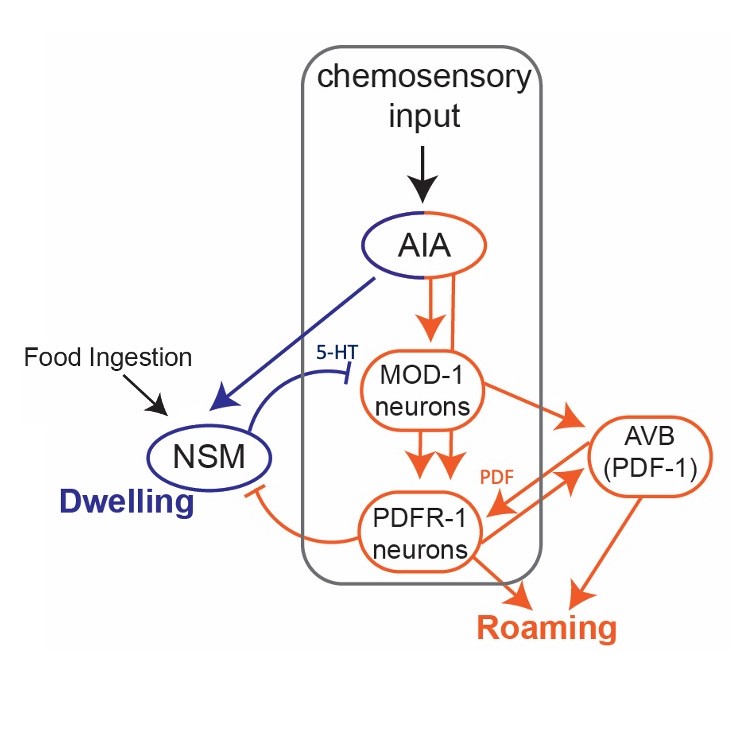
If you’ve ever walked around a city and then decided that you were feeling hungry enough to stop by an inviting café, then you know that animals, whether they are people or microscopic worms, can maintain and then switch among different behaviors depending on internal states (such as hunger) and external cues (such as sensory cues indicating the availability of food). Research in the lab of Steven Flavell, Lister Brothers Career Development Professor, has discovered an elegant circuit architecture in the simple worm C. elegans, that enables the integration of internal and external states to flexibly guide behavior. Notably, it utilizes ion channels and neuromodulators present in people.
As a postdoc in 2013, Flavell found that in foraging C. elegans animals the neuromodulators serotonin and PDF provided opposing signals to sustain either dwelling or roaming states, respectively. His study identified the cells involved. But many questions remained about how the circuit was wired up and functioned when Flavell joined The Picower Institute in 2016.

In 2019, the lab revealed how internal sensory information triggers the release of serotonin to promote the dwelling state, enabling a worm to slow down and linger when it has found a patch of the bacteria it eats. A serotonin-producing neuron called NSM has a fiber that reaches into the animal’s gut and deploys sensors called ion channels that detect when bacteria are being eaten. That signals the flood of serotonin in the worm’s brain so it sticks around for the meal. In doing the study, the lab uncovered a surprising linkage between humans and worms: The ion channels they discovered are also expressed in human intestines, so the study shed new light on the connection between human guts and brains, too.
In 2021 Flavell built on those results to discover the broader circuit architecture in the worm that integrates sensory and internal inputs to allow the worm to decide between long-lasting behavioral states: when to forage for food and when to stop to graze. The decision starts when the neuron AIA detects the smell of food. If NSM confirms the worm is eating, it inhibits movement with serotonin. But if food is smelled and no eating is happening, other neurons inhibit NSM with PDF, allowing roaming toward the smell to proceed. This study shed new light on basic circuit architecture that enable context-dependent decision-making.

